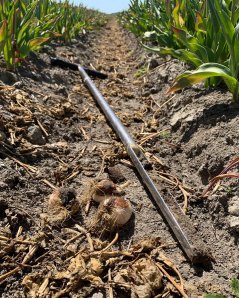
News
A deeper understanding of differences between management regimes
Growers can choose between three management regimes: organic, conventional or a hybrid between the two. The Greenhouse Horticulture and Flower Bulbs Business Unit of Wageningen University & Research (WUR) is researching the impacts of these management regimes on soil properties, microorganisms associated with tulip bulbs and the interactions between them. Understanding relationships between management regimes, soil properties and crop-associated organisms is the first fundamental step towards creating sustainable cultivation systems.
Every cultivation measure has effects on soil life and the crop, as well as their interactions. Therefore, management techniques, soil properties and the crop can be visualized as interacting together in a sort of network, with relationships between properties changed based on adjustments to management techniques. Changes to the quantity and quality in this network of interactions can have effects on resistance to stressors such as drought or invasion by disease. WUR investigated how different cultivation systems and soil types (sand versus clay) changed soil abiotic and biotic properties, tulip bulb-associated microorganisms and the relationships between them.
WUR discovered that conventional cultivation (versus organic or hybrid) can have a homogenizing effect on soil bacterial and fungal communities. In other words: conventional agriculture can lead to less variety in soil life. Further, network interactions were different based on soil type and management regime, with sand soil networks showing distinct clusters of interactions compared to those on clay soils.

Taken collectively, these results suggest that conventional agricultural management, as well as its interaction with soil type, may result in poorer soil function and a lower buffering capacity for stress and disease invasion. In the next phase of the research, WUR wants to supplement this research with data from other crops and dive deeper into the functions behind these interactive relationships in order to help create a more robust and sustainable management regime.